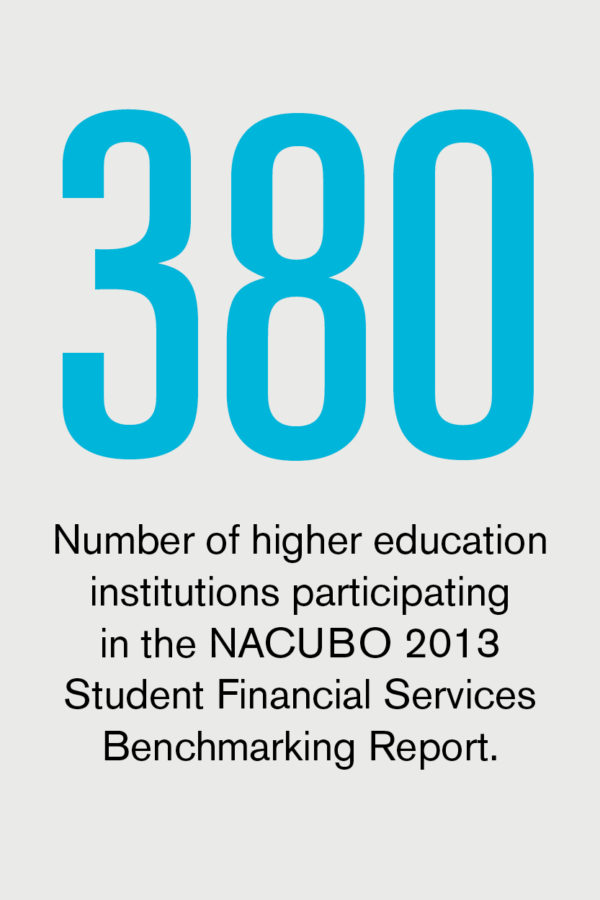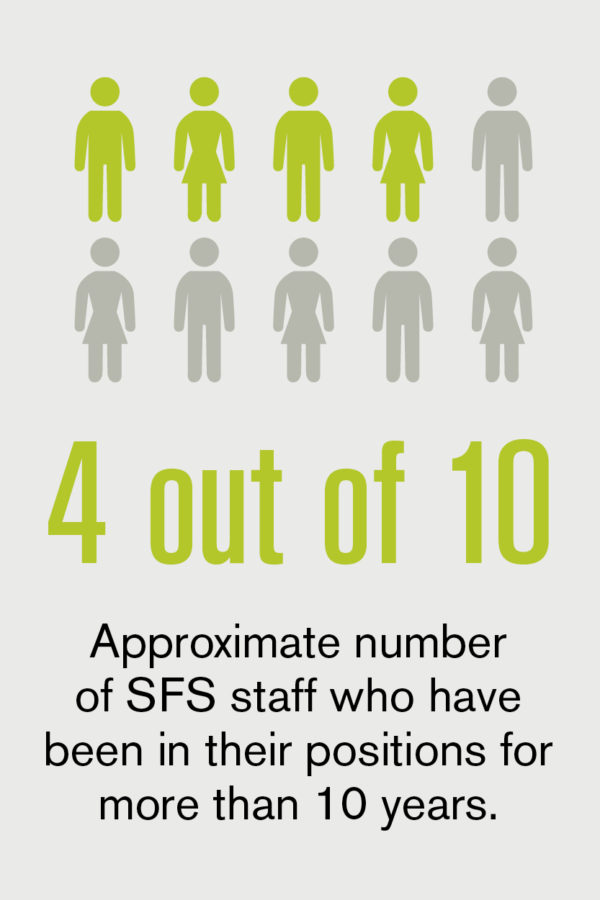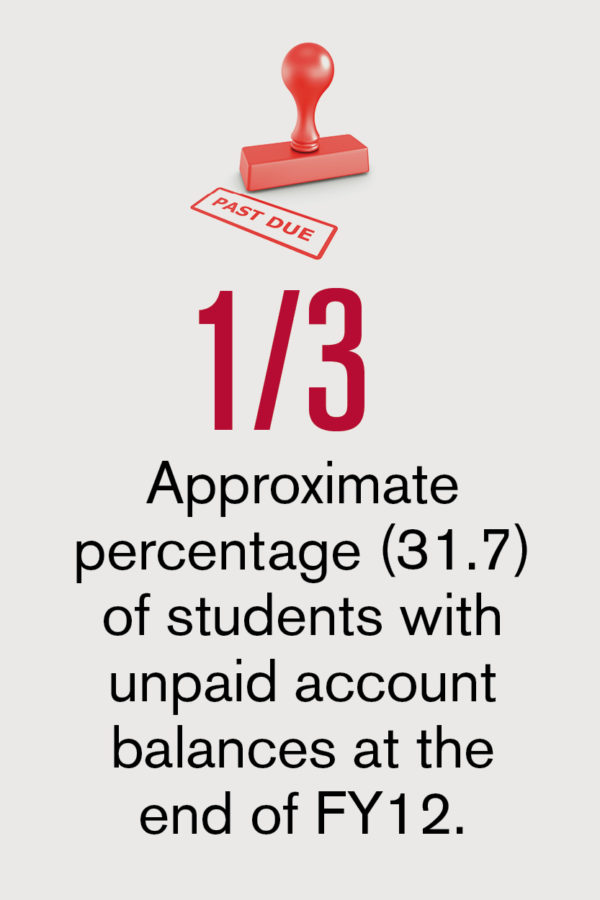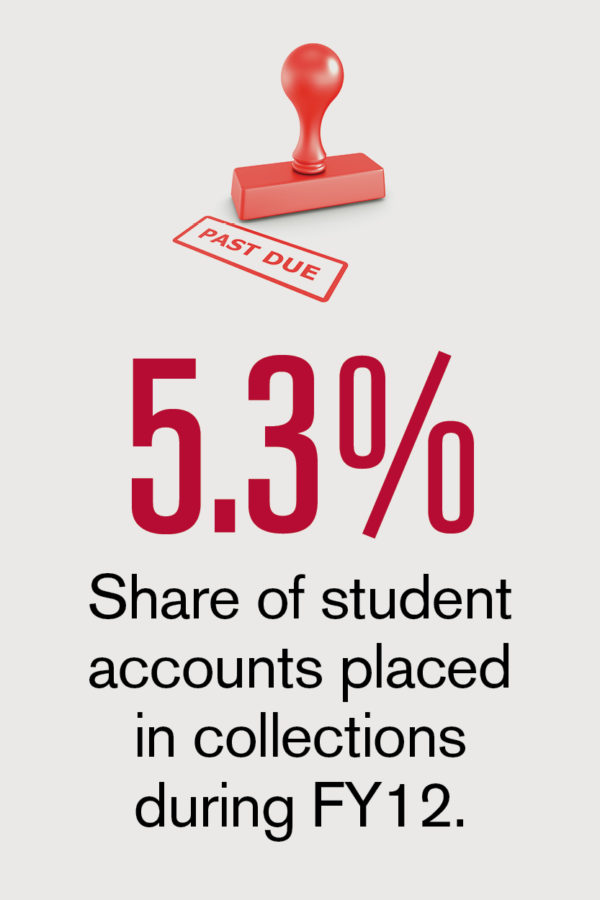Put a Curb on Operating Costs and Student Loan Debt
During the presentation “Remaining Nimble in the Face of External Challenges” at the NACUBO 2013 Annual Meeting, finance administrators from three universities shared ideas for improving efficiency and containing the student loan crisis. The chief business officers described a range of actions being pursued by campus leaders to steer their universities toward greater accountability and financial stewardship.
Berkeley Puts Brakes on the Budget
Among the strategies in play at the University of California, Berkeley, is an intense focus on the curriculum to identify more self-supporting degrees, noted Erin Gore, associate vice chancellor and chief financial officer. As state funding dwindles, the university is in the process of moving to a budget model versus an appropriation model, said Gore, thus changing the concept of a “magic pot” that administrators could sometimes dip into for approved activities.
Campus leaders are also asking tough questions about student debt. One consideration, for instance, is the idea that some students might be better off with fewer work-study hours if that would allow them to take more credits and graduate a semester earlier.
University Hospital Finds Efficiencies
The University of Illinois encompasses three campuses and a hospital. Peter Newman, senior assistant vice president, treasury operations, noted that a strong emphasis on providing internships is not only increasing enrollments in key disciplines like engineering, but is also expediting degree completion and job placement.
For its hospital, the university has squeezed essentially every drop of efficiency in operations. Initiatives include the following:
- Scrutinizing overtime.
- Renegotiating contracts.
- Leveraging technology.
- Running its own self-insurance fund for medical malpractice.
- Looking for ways to mitigate lawsuits for medical errors.
Setting Limits on Student Loans
At the University of Notre Dame, Notre Dame, Indiana, institutional financial aid has grown from $28 million in 2000 to approximately $150 million today. University leaders have likewise set goals of not having any student graduate with more than 10 percent of the cost of his or her attendance in loans, or any family spending more than 15 percent of its income to pay for college, noted John Sejdinaj, vice president for finance.
On the cost-cutting side, the university has set a goal to reduce the administrative hierarchy throughout the university, aiming for no more than six layers between front-line employees and the president.
SUBMITTED BY Karla Hignite, contributing editor.
ORGANIZATIONAL EFFECTIVENESSLearning Alliance Pairs Business and Academia
A novel collaboration in New York State between Putnam County and Mercy College, Dobbs Ferry, intends to heighten the region’s skills in emergency management and security. The Leader-ship Alliance will provide educational programming to Putnam County leaders in government, municipal departments, school districts, and private businesses. Mercy College professors who formerly held high-level positions in the private and public sector will teach the courses.
Announced in late August by MaryEllen Odell, Putnam County executive, and Ed Weis, dean of Mercy College’s school of business, the initiative will start off with two programs.
- A 12-month program, beginning in October, gives students the opportunity to earn a master’s degree in organizational leadership focused on emergency management and security. Classes meet at the Putnam County Emergency Services Training and Operations Center in Carmel, New York.
Part of the effort will be for Mercy College professors to assist Putnam County administrators to develop the county’s multijurisdictional hazard mitigation plan (MJHMP). The goal of the exercise is to identify risk and the related plans for mitigation, preparedness, and response.
- In January 2014, the college will begin offering Putnam County community leaders a certificate program in corporate and homeland security. The program provides 15 undergraduate credits toward a bachelor’s degree. The college plans to run the certificate program concurrently with the master’s program and integrate it with the MJHMP.
According to Putnam County’s Odell, the public-private partnership is generating a high level of interest. “Disaster preparedness skills are essential,” she says. “The training being offered will ensure that we have a critically trained team of first responders in place.”
As for the college, Weis sees the leadership alliance as an excellent opportunity for “leaders in Putnam County to collaborate with our faculty and former business and community leaders to tackle some of the county’s challenging issues.”
Representatives from more than 70 professional and collegiate sports organizations gathered in New York City in late August for the annual Green Sports Alliance Summit. Launched nationally in 2011, it includes 15 collegiate teams and more than 170 professional teams united around sustainability.
At the summit, the Green Sports Alliance, together with the Association for the Advancement of Sustainability in Higher Education (AASHE) and the National Resources Defense Council, released a new report titled “College Game Changers: How Campus Sport Is Going Green.” It includes 10 case studies of geographically diverse institutions, including the University of Oregon, the University of Minnesota, and Yale University. According to the report, “Collegiate athletics and recreation departments are following the lead of the professional sports industry and are embracing environmental stewardship to an unprecedented degree.”
The survey respondents, who represent 148 American and Canadian institutions, report that their campuses have undertaken the largest number of sustainability initiatives in the areas of recycling, energy efficiency, water efficiency, alternative transportation, paper purchasing, and green cleaning. Areas with the fewest sustainability initiatives implemented include renewable energy, purchasing, green building design, and composting.
Results from the 2013 survey also indicated activities in the following areas:
- Installed recycling infrastructure—completed by more than 200 collegiate sports departments (97 athletics and 119 recreational).
- Invested in energy-efficient practices—done by 146 collegiate sports departments (60 athletics, 86 recreational).
- Conducted energy audits to identify opportunity for energy savings—achieved by 118 collegiate sports departments (50 athletics, 68 recreational).
- Established a policy prioritizing purchasing—created by 109 sports departments (45 athletics, 64 recreational).
- Procured greener cleaning products—done by 122 collegiate sports departments (50 athletics, 72 recreational).
- Trained staff on greener cleaning practices—accomplished by 114 collegiate sports departments (47 athletics, 67 recreational).
- Built facilities with LEED green building design standards—completed by 88 collegiate sports departments (41 athletics, 47 recreational).
In addition to presenting results of a 2013 Survey of Green Initiatives associated with college varsity; campus recreation; and club sports programs, events, and facilities, the report offers 12 tips for successful green sports efforts and suggestions for student-led projects. The latter, for example, include an e-waste drive, a sports gear recycling drive, or a food donation program held in conjunction with an athletic event.
RESOURCE LINK For the report “Collegiate Game Changers: How Campus Sport Is Going Green,” go to www.nrdc.org/greenbusiness/guides/sports/files/collegiate-game-changers-report.pdf.
NACUBO CONTACT Sally Grans-Korsh, director, facilities management and environmental policy, 202.861.2571
A liberal arts institution that has cultivated some of the world’s most influential leaders, Wellesley College this summer announced its new initiative to create next-generation women leaders around the world. Women World Partners (WWP) represents the Wellesley, Massachusetts, college’s most wide-reaching effort to date to educate women for leadership positions and to invest in that leadership on a global scale.
To kick off the initiative, Wellesley has formed a long-term relationship with Peking University and launched the cooperative effort in Beijing in June, with an academic program and a global conference on women’s leadership. The educational model, developed in the college’s Albright Institute for Global Affairs, is based on a collaborative, multidisciplinary approach to problem solving. The China initiative is intended to be the inaugural partnership in a series of additional interactions with other leading educational institutions around the world.
Investing in Society
Numerous research studies have shown that investing in women’s education is the most effective way to improve economic and societal outcomes. According to the World Bank, countries with higher gender equality exhibit lower poverty levels and higher gross domestic product per capita.
So why did China seem a good place for the Wellesley partnership to start? In addition to longstanding ties with that country, Wellesley recognizes China as a leader in the education of women. The World Bank reports that in China increasing income for adult females has led to an increase in the years of schooling for both boys and girls. In contrast, a comparable rise in male income actually reduced educational attainment for girls, with no impact at all on boys.
Such data make it clear that when women are empowered to pursue higher education and plan for their own futures, benefits can be far-reaching. But, Wellesley recognizes that far too many women around the world, including in the United States, simply have no access to education and societal benefits that come along with it. Women World Partners seeks to fill that void.
Immediate Interactions
For the June launch, 20 Wellesley students traveled to Beijing to participate in an intensive 10-day academic program with 20 female students from Peking University. Supported by faculty from both institutions, practitioners from the field, and international thought leaders, the 40 women worked together to examine a number of issues.
Exploring such challenges as economic inequality, wildlife preservation, and food scarcity began to provide fresh insights into some of the world’s most pressing problems. Culminating in a one-day summit, Women’s Leadership: Making a Difference in the World, a host of high-
level leaders, including Chinese dignitaries from the National People’s Congress; Wang Enge, president of Peking University; H. Kim Bottomly, Wellesley’s president; and Gary Locke, U.S. ambassador to the People’s Republic of China, played various roles in the conference.
Teaching Turnabout
The Women World Partners relationship continues with faculty and student exchanges, joint research, and virtual collaborations. In 2014, Peking University students will travel to Wellesley for another joint academic program.
Look for more news on WWP later in 2014, when Wellesley announces the next international partnership. To read more about Women World Partners, go to www.wellesley.edu/wwp.
The University of Houston’s share of royalty income has grown dramatically over the past five years, reaching $16.6 million in 2013, up from $1.1 million in 2008. The increase reflects primarily the success of two drugs developed at least partially at the university. The money is used to support faculty research, covering costs of patent protection or setting up a new lab, for example.
Fast Fact
What Is More Important Than Where
An analysis of the earnings of recent college graduates in five states finds that some certificate and associate degrees are far more lucrative than four-year degrees. “Higher Education Pays: But a Lot More for Some Graduates Than for Others,” with funding provided by the Lumina Foundation, examines the average first-year earnings of graduates from two- and four-year institutions in Arkansas, Colorado, Tennessee, Texas, and Virginia. “The findings challenge some conventional wisdom, showing for example that what you study matters more than where you study,” says Mark Schneider, author of the report and president of College Measures.
The labor market rewards technical and occupational degree skills, with engineering graduates earning the most in all five states.
New Compliance Tool for Higher Education
The National Association of College and University Attorneys (NACUA) recently announced the launch of the Higher Education Compliance Alliance. Spearheaded by NACUA, the alliance currently comprises 30 participating associations representing a broad cross-section of higher education interests. The new online tool was developed to help the higher education community comply with the ever-growing body of federal law and regulation that affects colleges and universities. Through the alliance, NACUA and other participating associations have agreed to make available selected resources from their libraries, as a service to the higher education community at large.
![]()
By The Numbers
Student Financial Services: 2013 Report
Source: NACUBO 2013 Student Financial Services Benchmarking Report










